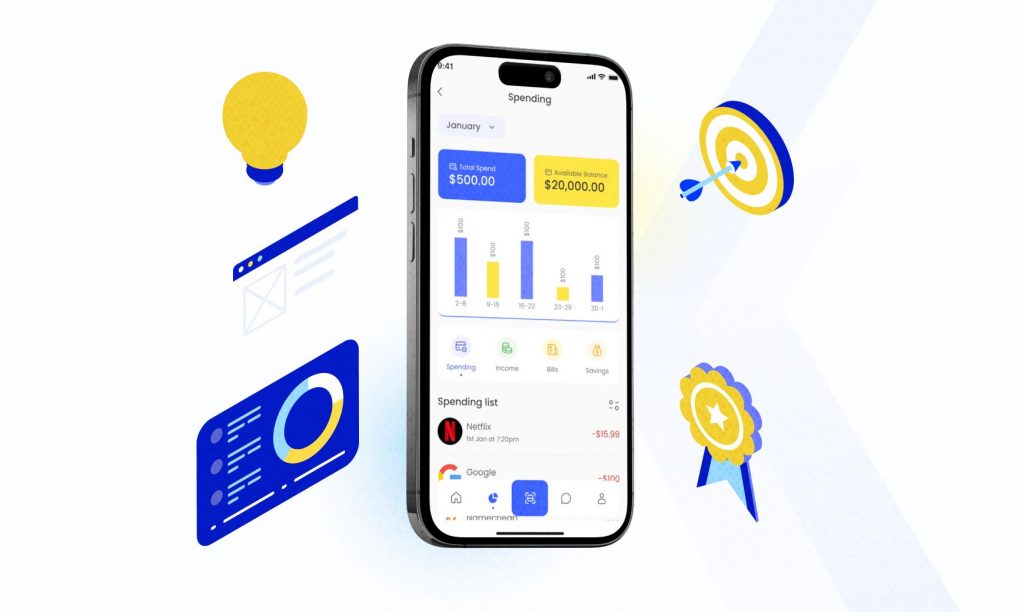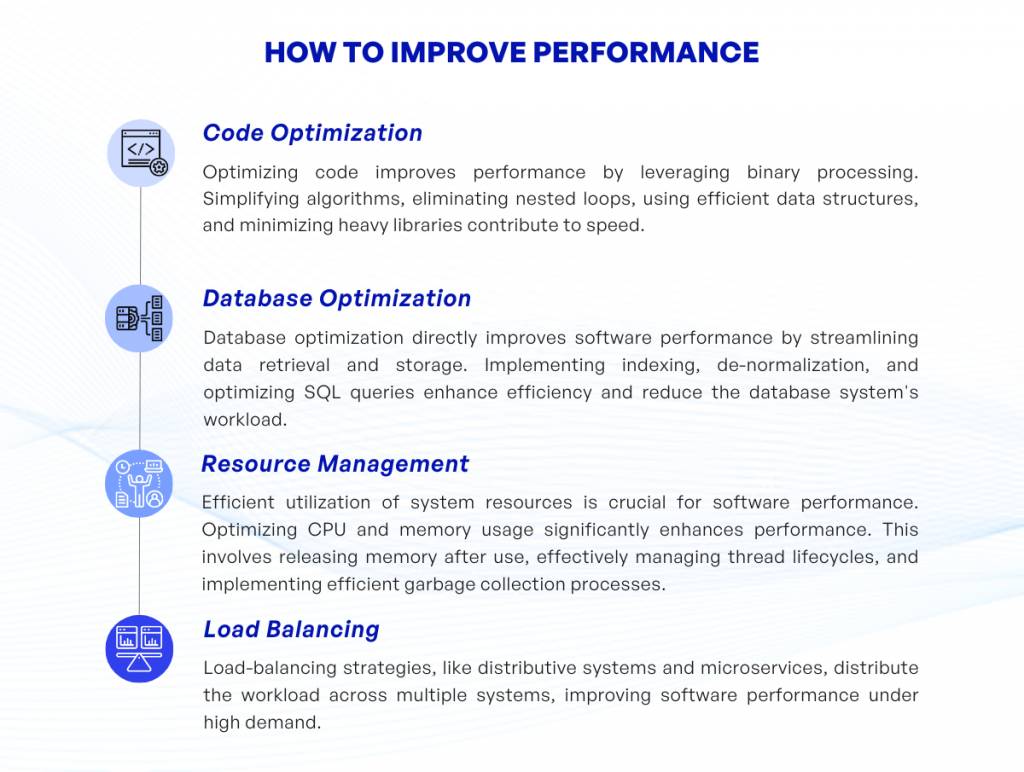
Have you ever wondered just how impactful software performance can be?
According to a recent study by Google, a delay of just 100 to 400 milliseconds in page response can lead to a drop in user engagement of up to 0.44%. In the rapidly evolving world of software development, that number is not trivial. It’s substantial.
That’s right: a seemingly insignificant lag in software performance could potentially cause significant losses in user engagement. But, what exactly is software performance, and why is it so important? Let’s dive deeper.
1. Understanding the Concept of Software Performance
So, what exactly is software performance? To put it simply, performance relates to how effective your software is at getting tasks done. But, let’s delve a little deeper. Software performance is essentially about gaining speed and efficiency in a program or software application. It’s an area of concern that directly impacts the functionality and user experience.
Picture this: you’re using an application that takes forever to load. Exasperating, isn’t it? That’s a clear sign of poor software performance. On the other hand, software with good performance is responsive, quick, and easy to interact with. It’s the type of software that underscores high-quality user experiences.
Now you may be wondering – why is software performance so vital? The answer lies in the direct relationship between software performance and user satisfaction. In today’s fast-paced digital era, users value their time more than ever. Slow software that keeps them waiting does not just frustrate users, but it can also make them turn to quicker, more efficient alternatives.
The major contributors to software performance are the effectiveness of the underlying algorithms, the efficiency of resource utilization (CPU, memory, network, and disk), response time, throughput, and scalability. In essence, better management of these factors leads to improved software performance.
So, as you see, software performance is not just a technical metric but a critical factor that fuels user satisfaction, influencing the overall success of a given software application.
2. Impacts of Software Performance on Revenue
Comes to the business domain, you might be wondering how exactly software performance can influence revenue. Yet, this critical link is often underestimated. Let’s dive into the depths of how software performance can dictate business success.
First and foremost, the speed, responsiveness, and reliability of your software significantly impact user experience (UX). Have you ever thought about how many times you abandoned a webpage because it was taking too long to load? Quite often, isn’t it? Studies show that a one-second delay in page response can cause a 7% reduction in conversions, leading to a potential loss in revenue. If your software fails to deliver a user-friendly environment or is exceptionally slow, users are less likely to choose your product over competitors.
Additionally, let’s not forget about issues of scalability. Can your software handle sudden surges in user load or data requests? If your software crashes under pressure or simply can’t scale up to meet demand, your business’s credibility might take a blow. Consequently, you lose the trust of your customers and cause considerable financial losses.
Poorly performing software can also lead to increased operating costs. How? Let me explain. Sudden crashes or errors might require intensive debugging to bring your software back online, which involves manpower, time, and potential third-party disaster recovery assistance. These are unplanned costs that can take a toll on your financial stature.
In conclusion, getting your software performance right can play a crucial role in boosting revenue, whereas ignoring performance issues may put you at risk of financial loss and damage to your brand’s reputation.
Now that you understand the impacts of software performance on revenue, what measurements can you use to know if your software is performing as it should?
3. Key Metrics to Monitor Software Performance
Now that we’ve established the importance of software performance, how exactly do we assess it? What are the metrics that can provide us with accurate insights? Is it as simple as checking to see if an application launches quickly? Or is there more to it than meets the eye?
Indeed, measuring software performance involves a comprehensive set of metrics that delve beyond simple load times. Let’s get acquainted with a few key ones:

3.1. Response Time
This is arguably one of the most crucial metrics. Response time refers to the total time it takes for a system to respond to a request from the user. From clicking a button to loading a page, response time measures how long the user experiences a delay. It’s essential because a slow response time can lead to user frustration, potentially causing them to abandon the application.
3.2. CPU Usage
Your system’s central processing unit (CPU usage) can provide vital clues about your software’s efficiency. If an application requires a high percentage of the CPU’s capacity, it may indicate that the software is not optimally written or overusing resources. It’s a tricky balancing act – you want your software to utilize the CPU effectively without monopolizing it.
3.3. Memory Usage
This metric refers to the amount of memory a software application uses while running. Like CPU usage, over-utilization of memory can affect the application’s overall performance and leave limited resources for other applications on the system. It’s crucial to ensure that your software uses memory efficiently.
3.4. Error Rate
Errors and crashes are frustrating for any user, not to mention they interrupt the task at hand. Tracking the frequency of these errors can help identify patterns or pinpoint areas that need extra attention. This metric allows for proactive troubleshooting and aids in enhancing the overall software performance.
These are just some of the primary performance metrics one should consider when evaluating software. It’s important to remember that the specific metrics employed may vary depending on the type of software, its purpose, and the environment in which it operates. It’s all about finding the right balance to ensure optimal performance. What will we focus on next, you ask? Now, we will delve into strategies to improve software performance.
4. Apdex score: Metrics to Measure User Satisfaction
Now that you’re familiar with some of the key metrics to monitor software performance, let’s delve into a metric that gives a broader perspective of the user experience – the Apdex score. You’re probably wondering what the Apdex score is, right? It’s a universal standard used to measure and report on software application performance in terms of user satisfaction.
How does the Apdex score work? It essentially works on a simple concept: it categorizes the responses into three classes – Satisfied, Tolerating, and Frustrated, and then computes an index number between 0 and 1. Here, 0 represents all users are frustrated, and 1 means all users are satisfied. This way, it offers a composite view of the degree to which the application’s performance meets user expectations.

Source: https://en.wikipedia.org/wiki/Apdex
But what determines whether a user is satisfied, tolerating, or frustrated? It’s all about the response time. Users who experience response times within the set threshold are considered satisfied. If the response time is between the threshold and four times it, users are categorized as tolerating. Beyond that, users are tagged as frustrated. It might appear overwhelming, yet it’s pretty straightforward to grasp when you actually use it.
You might wonder, why should you use the Apdex score. Well, it’s all about understanding your users better. It allows you to monitor application performance from a user perspective and provides insights into how satisfied users are with your application’s performance. Many organizations trust Apdex scores as it is an efficient way to identify and solve performance-related issues before they adversely affect user satisfaction levels. By doing so, it enhances user experience and boosts customer loyalty.
In conclusion, keep in mind that while the Apdex score provides an overview of user satisfaction, it should be used in tandem with other software performance metrics to get a comprehensive understanding of your software’s overall performance health.
5. How to Improve Performance
When it comes to improving software performance, what are some steps you can take? The key lies in thorough planning, active monitoring, and consistent optimization. Let’s delve into a few methods you could employ to enhance the performance of your software.

5.1. Code Optimization
Code optimization is a major key to improving performance. See, computers only understand binary – 1’s and 0’s (true and false). Therefore, the shorter and cleaner your code, the faster it will run. Reducing the complexity of the algorithms you use, removing unnecessary nested loops, and adopting efficient data structures can all contribute to this. Moreover, minimizing the use of heavy libraries can also go a long way.
5.2. Database Optimization
Now, you may be asking yourself, how is database optimization related to software performance? The connection lies in how data is retrieved and stored. For a software application to perform better, the data retrieval process needs to be as smooth as possible. This can be done by using indexing on database tables, de-normalization where feasible, and optimizing the SQL queries. Remember, reducing the load on the database system indirectly improves the software’s performance.
5.3. Resource Management
How efficiently your software uses system resources is also an integral part of software performance. Making sure your software does not consume excessive CPU or memory resources can greatly improve performance. This can be achieved by releasing memory after use, managing thread lifecycles effectively, and implementing proper garbage collection processes.
5.4. Load Balancing
Finally, let’s not forget about load-balancing strategies like using distributive systems and microservices. Distributive systems, for example, spread the workload across multiple systems. Therefore, the increase in user requests is distributed, reducing the load on individual systems. Consequently, the performance is greatly improved, ensuring your software doesn’t buckle under high demand.
Improving software performance isn’t something that’s achieved overnight – it requires continuous monitoring, tweaking, and polishing. Remember, every millisecond counts towards providing a smooth user experience. So make it count!
6. Conclusion
In the realm of software development, performance isn’t just a nice-to-have; it’s a vital aspect that directly influences user satisfaction and your bottom line. From understanding its core concept to learning how to monitor crucial metrics like response time, CPU usage, memory usage, and error rates, you’ve embarked on quite a learning journey. We can’t stress enough the importance of tracking the Apdex score to gauge user satisfaction either.
But remember, tracking is just half of the story. You’ve also delved into practical strategies to boost software performance. These include code optimization, database enhancement, effective resource management, and efficient load balancing. Take these as not mere strategies but as critical tools in your software development arsenal.
Through mastering these techniques, you can bring out the best in your software, delivering products that are not only functional but also robust, efficient, and reliable. And isn’t that what all developers strive for?
Always remember, in the fast-paced digital world, high-performance software isn’t an option. Instead, it is the bare minimum that users expect from their digital experiences.
So, where do you go from here? Everywhere. With these tools and knowledge at your disposal, you’re more than equipped to tackle any performance-related challenges your software might face. Build, optimize, monitor, and ascend. That’s the game plan. See you at the top of the performance ladder!
If you have any questions about optimizing software performance, feel free to contact KVY TECH.


